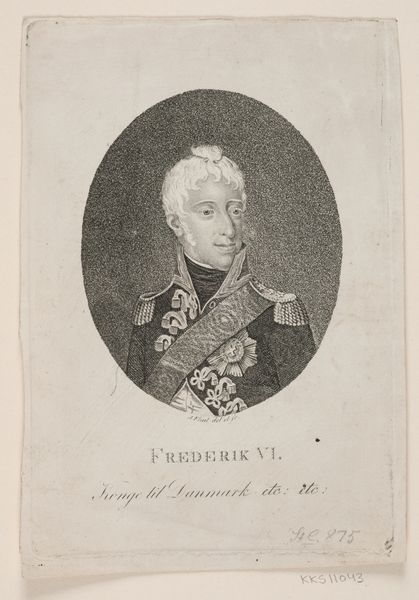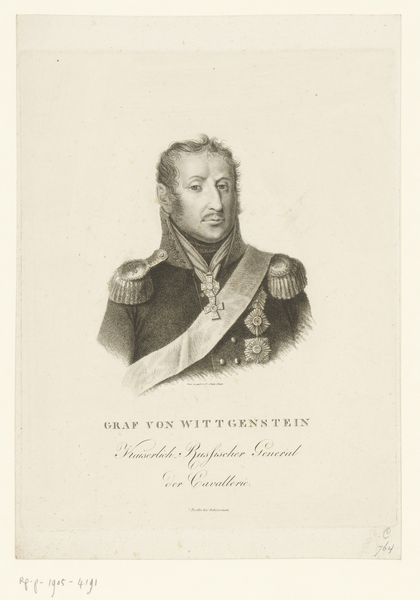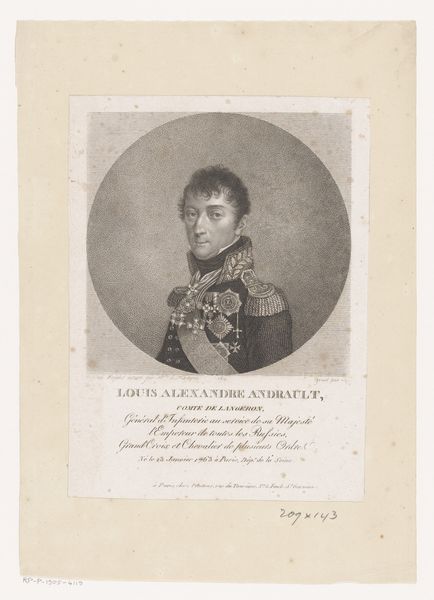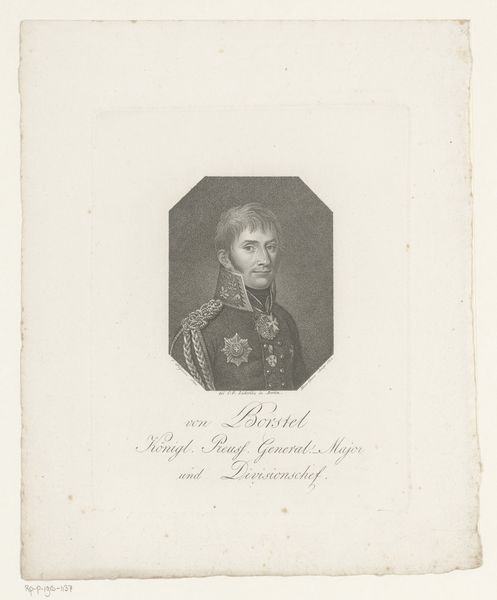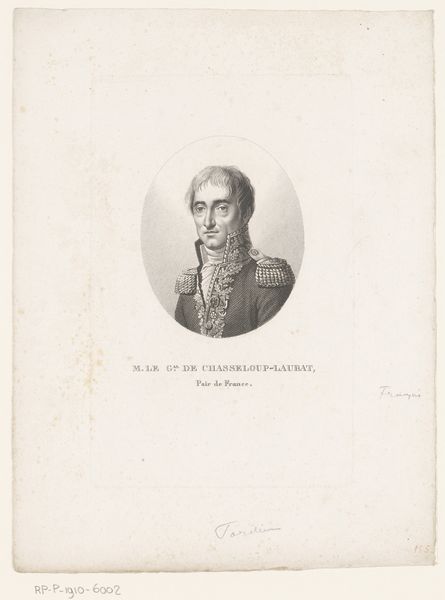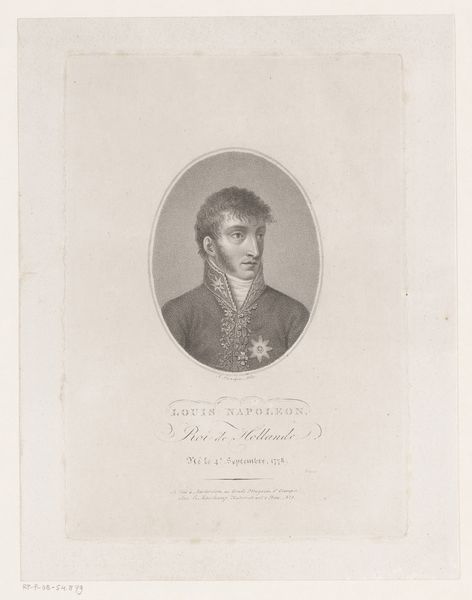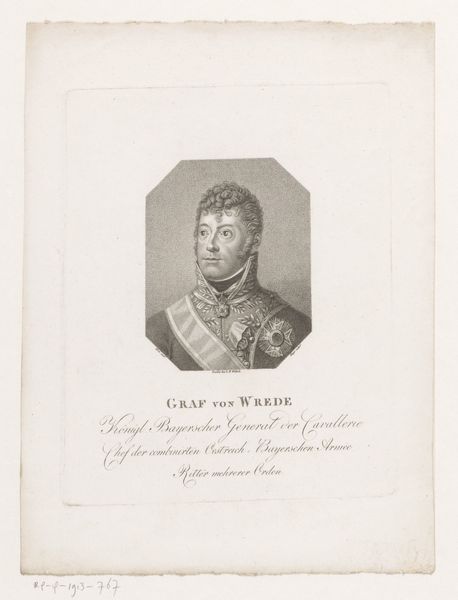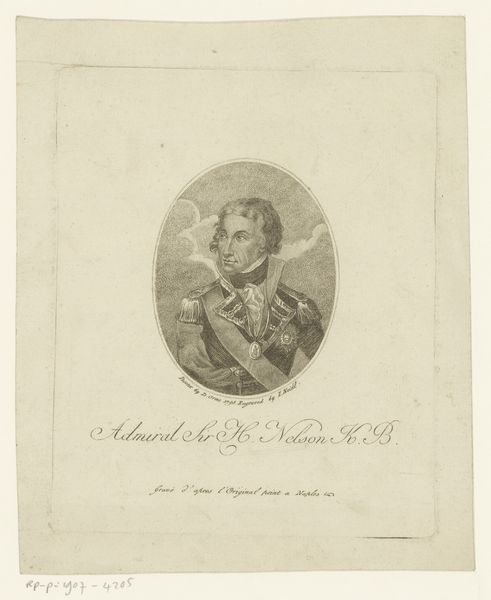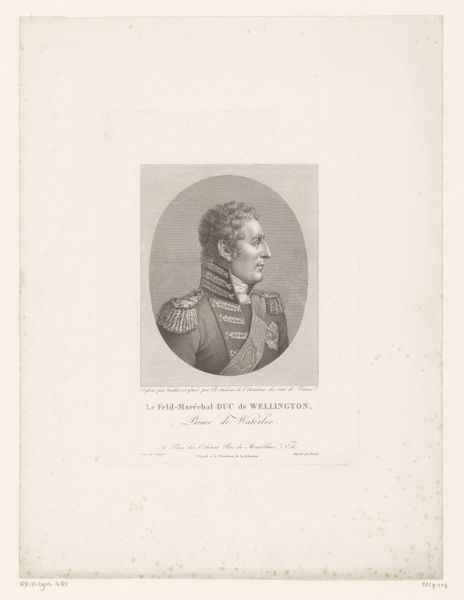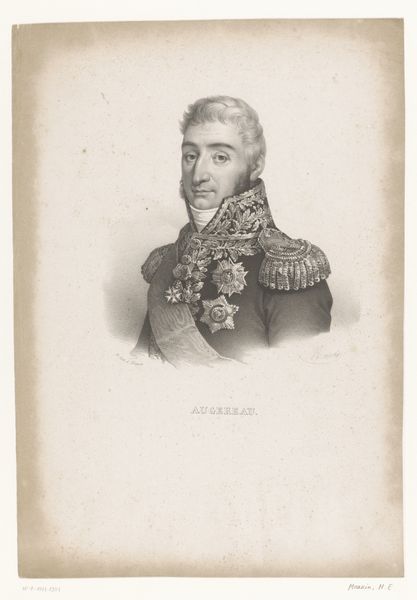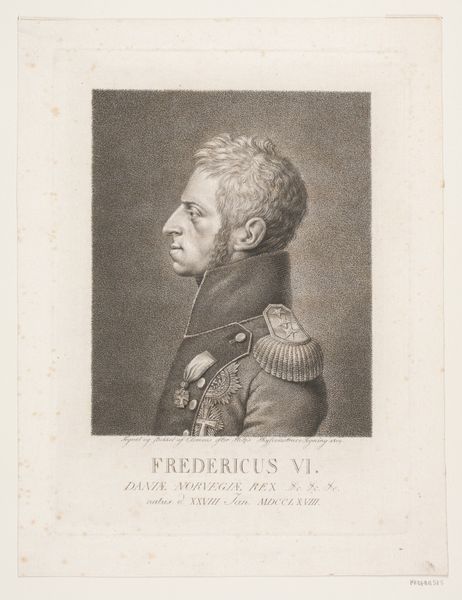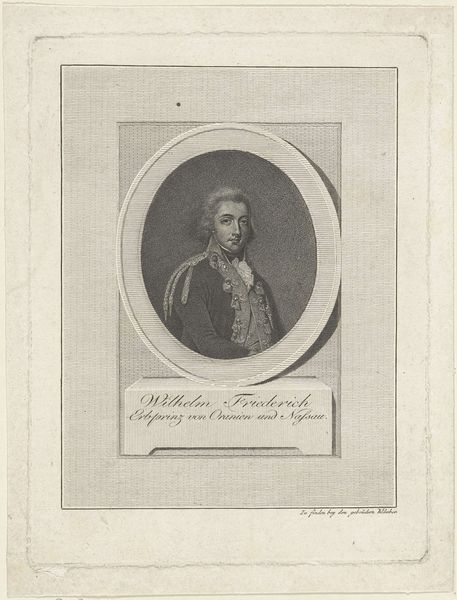
Dimensions: height 215 mm, width 150 mm
Copyright: Rijks Museum: Open Domain
Editor: Here we have Angelo Biasioli's "Portret van aartshertog Rainieri," made sometime between 1800 and 1830. It's an engraving, a print of a nobleman. The detail is quite striking given the medium. What strikes you about this piece? Curator: As a materialist, I'm drawn to the labor and resources required to create this engraving. Consider the social context: an image intended to circulate widely, disseminating the power of the Habsburg elite through a relatively reproducible format. How does the choice of engraving, versus painting, affect its accessibility and message? Editor: That's interesting! I hadn't thought about it like that. Was printmaking a more democratic medium then? Curator: Precisely! While still catering to a certain literate class, engravings offered broader distribution than unique, costly paintings. Think of the physical act: the artisan meticulously incising the copper plate, the press mechanically reproducing the image, then being disseminated through channels of commerce. The 'aura' isn't in the singular artwork itself but embedded within the production process. Does knowing this alter your perception of the sitter's aristocratic bearing? Editor: Yes, absolutely. Knowing the print could be anywhere diminishes the power slightly. It’s less unique, less…divine. More about manufactured consent, maybe? Curator: "Manufactured consent" is an intriguing framing, one that resonates. These objects reinforce existing power structures via their making and distribution, but the mode of production exposes power as a physical process too. Now consider this, how does its accessibility impact art and commerce beyond that specific setting? Editor: I'm beginning to see how considering the material helps uncover its wider implications and underlying intent! This engraving and others were produced as pieces of material culture, that had complex links to labor, social class, and consumption during its era. Thank you! Curator: Exactly! Considering the labor and production adds a valuable perspective. We might find new angles of historical analysis when viewing any material creation.
Comments
No comments
Be the first to comment and join the conversation on the ultimate creative platform.

